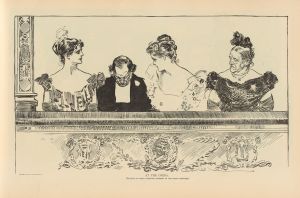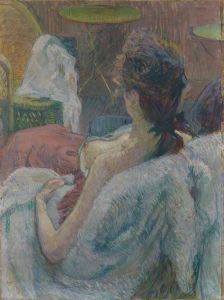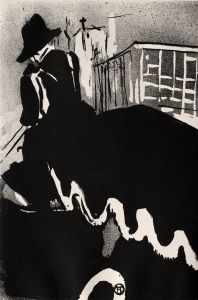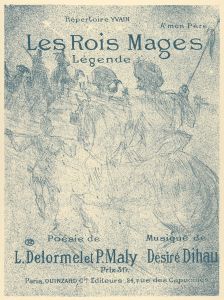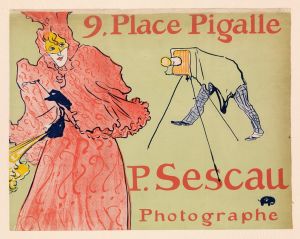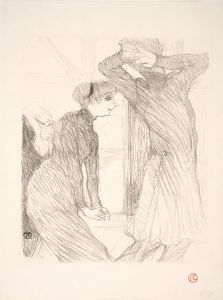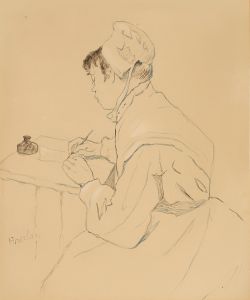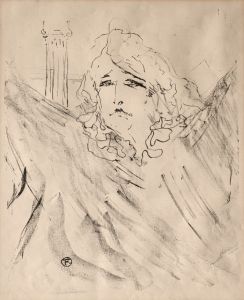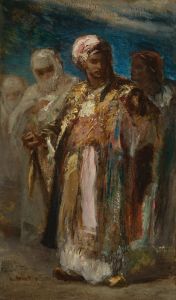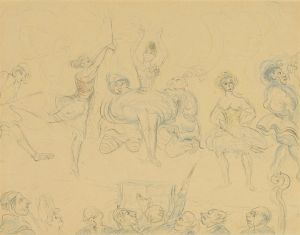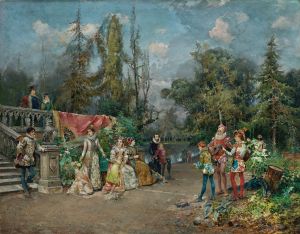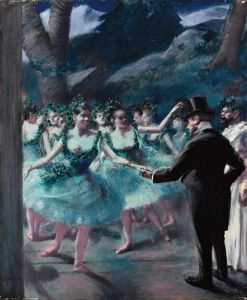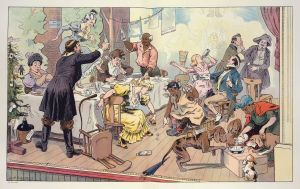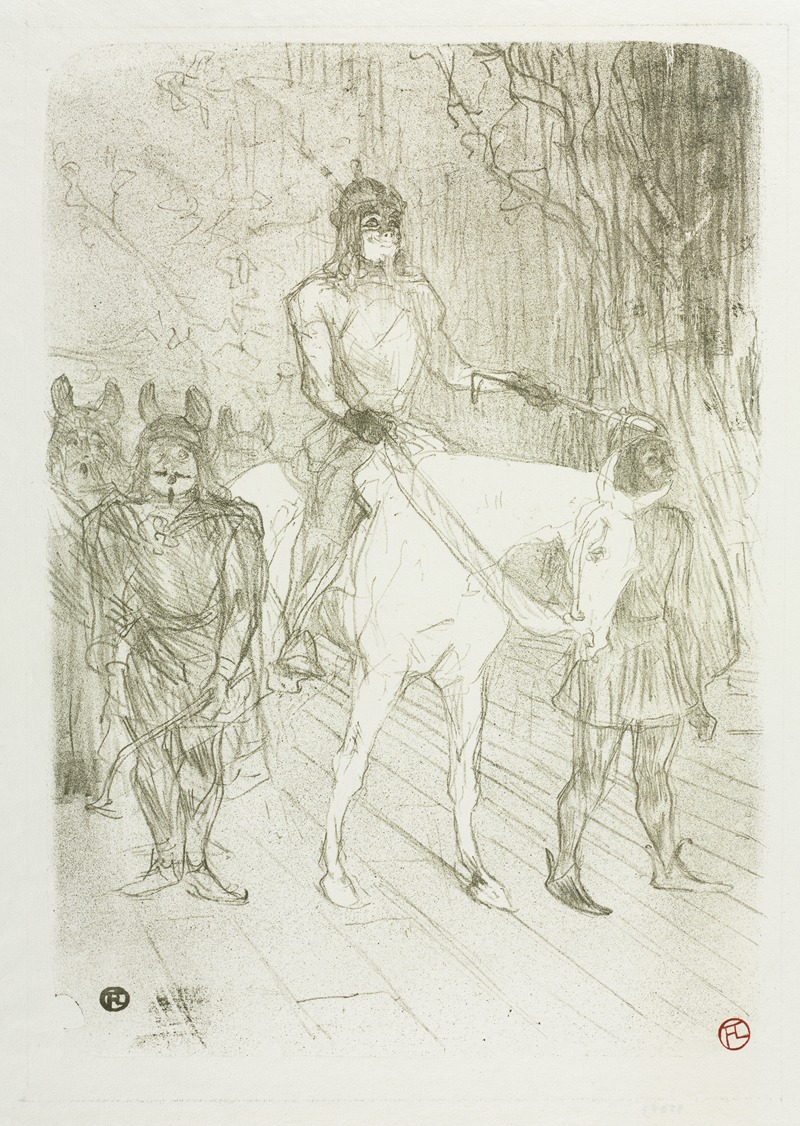
Entrée de Brasseur, dans Chilpéric
A hand-painted replica of Henri de Toulouse-Lautrec’s masterpiece Entrée de Brasseur, dans Chilpéric, meticulously crafted by professional artists to capture the true essence of the original. Each piece is created with museum-quality canvas and rare mineral pigments, carefully painted by experienced artists with delicate brushstrokes and rich, layered colors to perfectly recreate the texture of the original artwork. Unlike machine-printed reproductions, this hand-painted version brings the painting to life, infused with the artist’s emotions and skill in every stroke. Whether for personal collection or home decoration, it instantly elevates the artistic atmosphere of any space.
Henri de Toulouse-Lautrec, a prominent French painter and illustrator, is renowned for his depictions of Parisian nightlife in the late 19th century. One of his works, "Entrée de Brasseur, dans Chilpéric," captures a scene from the operetta "Chilpéric," which was composed by Hervé and first performed in 1868. Toulouse-Lautrec's painting reflects his fascination with the theatrical world and his ability to capture the vibrancy and dynamism of performance art.
Toulouse-Lautrec was born into an aristocratic family in 1864 in Albi, France. Despite his noble lineage, he was drawn to the bohemian lifestyle of Paris, particularly the Montmartre district, which was a hub for artists, writers, and performers. His physical disabilities, resulting from a genetic disorder and accidents in his youth, may have contributed to his keen observational skills and his ability to empathize with the marginalized figures he often depicted.
The painting "Entrée de Brasseur, dans Chilpéric" is part of Toulouse-Lautrec's broader body of work that focuses on the entertainment industry, including theaters, circuses, and cabarets. His works are characterized by their bold colors, dynamic compositions, and expressive lines, which convey the energy and movement of the scenes he portrayed. Toulouse-Lautrec's style was influenced by Impressionism and Post-Impressionism, but he developed a distinctive approach that set him apart from his contemporaries.
In "Entrée de Brasseur, dans Chilpéric," Toulouse-Lautrec captures the entrance of a character named Brasseur, presumably a performer in the operetta. The painting likely reflects the lively and comedic nature of the operetta, which was known for its satirical take on historical and mythological themes. Toulouse-Lautrec's ability to convey character and emotion through his art is evident in this work, as he brings the theatrical performance to life on canvas.
Toulouse-Lautrec's interest in theater and performance was not limited to painting; he also created numerous posters and prints that advertised shows and performers. His work in this area helped to elevate the status of the poster as an art form and contributed to the development of modern graphic design. Toulouse-Lautrec's posters are celebrated for their innovative use of color, typography, and composition, which effectively captured the essence of the performances they promoted.
Throughout his career, Toulouse-Lautrec maintained close relationships with many performers and artists, which gave him unique access to the behind-the-scenes world of Parisian entertainment. His works provide a valuable historical record of this vibrant cultural scene, offering insights into the social dynamics and artistic innovations of the time.
Toulouse-Lautrec's contributions to art were recognized during his lifetime, but his reputation has only grown since his death in 1901. Today, he is celebrated as one of the most important figures of the Post-Impressionist movement, and his works are held in major museums and collections around the world. "Entrée de Brasseur, dans Chilpéric" is a testament to his enduring legacy and his ability to capture the spirit of an era through his art.





